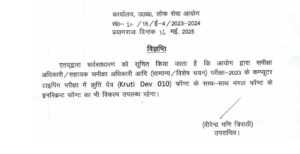Table of Contents
Context: Silicon Valley Bank, a lender to some of the biggest names in the technology world, became the largest bank to fail since the 2008 financial crisis.
What is the Silicon Valley Bank?
- Silicon Valley Bank (SVB) is a US-based financial institution that provides banking and financial services to the technology, life science, healthcare, private equity and venture capital industries.
- It was founded in 1983 and is headquartered in Santa Clara, California.
- How big is the SVB?
- SVB has businesses with nearly half of all the US-venture backed startups, and 44% of the US-venture backed tech, healthcare firms that went public last year.
- As of December 2022, SVB had $212 billion in assets.
- The bank’s clients include household names like Shopify, Pinterest, etc.
What led to the Collapse of SVB?
- Bank run: In short, Silicon Valley Bank (SVB) encountered a classic run on the bank.
- A bank run is a sudden and simultaneous withdrawal of deposits by a large number of customers due to a loss of confidence in the bank’s ability to protect their funds.
- Key events and factors that led to the collapse of SVB:
- Low Interest Rates: Following the 2008 depression, interest rates in the US were low, which led to cheaper loans and increased investment in start-ups, benefiting banks like SVB.
- Lack of diversification in investment portfolio: The Silicon Valley Bank invested most of its assets in US bonds.
- Federal Reserve Interest Rate Hikes: In 2022, to combat pandemic induced inflation, the US Federal Reserve began raising interest rates, reducing returns on bonds and slowing down start-up funding, which led to a decrease in deposits at SVB.
- Liquidity crunch: SVB’s credit rating was downgraded by multiple agencies, and a number of fund companies called on their portfolio companies to withdraw their funds from the bank, leading to an inability for SVB to fulfill such a high demand for withdrawal.
- On Thursday, March 9 alone, the customers tried withdrawing $42 billion from the bank. It was equal to a quarter of the bank’s total deposits.
- And the SVB witnessed the event of bank run, the trading of the bank’s stock was halted, and the bank tried to sell itself. The regulators stepped in and shut the bank.
How will SVB’s Collapse hurt Start-Ups?
- Payroll Shortfalls and Job Losses: Y Combinator’s petition predicts that 10,000 small businesses with deposits in SVB will fail to make payroll within the next 30 days. This collapse is expected to affect around 100,000 jobs.
- Uncertainty for Small Businesses: Another petition to the US Secretary of Treasury claims that over 37,000 small businesses with more than $250,000 in deposits at SVB are now uncertain about their future.
- Funding Shortfalls and Liquidity Crunch: Start-ups that rely on SVB for funding may face a liquidity crunch due to the bank’s collapse. The collapse may lead to a decrease in venture capital funding available for start-ups.
- Will SVB collapse hurt Indian banks? According to reports, the finance ministry and experts have said that the crisis may leave the Indian financial system unscathed

About the 2008 Global Financial Crisis
- The 2008 global financial crisis was a severe economic downturn that started in the United States and spread to other countries around the world.
- Causal factors for the crisis:
- The crisis was triggered by the collapse of the US housing market, which had been propped up by risky lending practices and financial engineering.
- As housing prices declined, borrowers defaulted on their mortgages, leading to a chain reaction of losses and liquidity issues throughout the financial system.
- Large banks and financial institutions faced insolvency, causing panic in financial markets and leading to a global credit freeze.
- Impact: The crisis led to a global recession and widespread unemployment, and had far-reaching impacts on businesses, households, and governments around the world.
- After math of the crisis: Governments and central banks intervened with massive bailouts and monetary policy measures to prevent a complete collapse of the financial system.
- Impacts on Indian economy:
- Slowdown in GDP growth: The Indian economy experienced a slowdown in GDP growth, with growth rates falling from over 9% in 2007-08 to 6.7% in 2008-09 and 6.5% in 2009-10.
- Reduced exports: The crisis led to a global slowdown in trade and reduced demand for Indian exports, particularly in sectors such as textiles, gems and jewelry, and leather.
- Stock market decline: The Indian stock market experienced a significant decline, with the benchmark index falling by over 50% between January 2008 and March 2009.
- Foreign capital outflows: The crisis led to foreign investors pulling out capital from emerging markets such as India, leading to a decline in foreign exchange reserves and depreciation of the Indian rupee.
- Impact on financial sector: The crisis had a significant impact on the Indian financial sector, with several Indian banks and financial institutions facing losses and liquidity issues due to their exposure to global financial markets.

 UPPSC RO ARO Exam Date 2025 Out: Typing ...
UPPSC RO ARO Exam Date 2025 Out: Typing ...
 Maharashtra Bill to Curb Urban Naxalism,...
Maharashtra Bill to Curb Urban Naxalism,...
 International Maize and Wheat Improvemen...
International Maize and Wheat Improvemen...





















